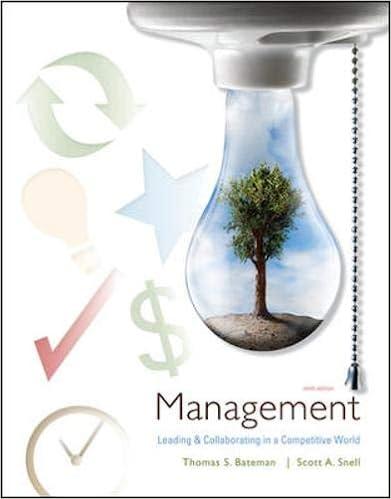Today, Whirlpool has more than 1,000 I-mentors worldwide. They apply the knowledge from their innovation training not
Question:
Today, Whirlpool has more than 1,000 I-mentors worldwide. They apply the knowledge from their innovation training not only to develop marketable ideas but also to improve the company’s processes and procedures continually. For example, Whirlpool’s human resource systems, such as its hiring, training, and pay, now reflect the new enterprise wide emphasis on idea development. Whirlpool acquired rival Maytag Company in 2005. Knowing that speed is of the essence when merging companies, Whirlpool worked quickly to integrate Maytag’s employees and product lines. Managers made sure that high-performing employees were identified in plants slated to be closed and found ways to integrate them into other operations. They also educated remaining employees in both former companies of what the newly combined company would produce. Then the company streamlined and modernized its larger supply chain to operate more efficiently. Under Whirlpool’s ownership, the Maytag brand is now recovering; it had been dropped by Best Buy. Creative thinking also helps support Whirlpool’s efforts to achieve environmental sustainability. From research studies, the firm found that resource-saving appliances are critical, since 93 percent of greenhouse gas emissions come from in-home appliance use. Through improvements in the design and manufacture of its products, by 2006 Whirlpool had reduced greenhouse gas emissions an estimated 19 percent. The following year, it pledged to reduce its emissions an additional 6.6 percent by the year 2012—an amount whose positive impact would be equivalent to nearly 7,000 square miles of trees, an area roughly the size of Rhode Island and Connecticut. The company also strives to rethink its recycling program. By 2007, Whirlpool was recycling nearly 90 percent of the 400-plus metric tons of waste its manufacturing plants produce annually. It has also found ways to recycle the plastic-foam packaging that protects its products during shipping. The foam is ground up to make plastic furniture and playground equipment.
• Industry observers suggest that by encouraging companywide participation in idea formation, Nancy Snyder has created a competitive advantage for Whirlpool. What evidence supports this opinion? What role do employees play in this process?
• The innovation team approach that cut across Whirlpool’s divisions and departments provides it with continual information for new-product ideas and improved operations. Snyder set up a company intranet to centralize training for I-mentors and enhance communication across all of Whirlpool’s divisions. How did this help the company improve its products and processes?
Step by Step Answer:

Management Leading And Collaborating In The Competitive World
ISBN: 9780078137242
9th Edition
Authors: Thomas Bateman, Scott Snell





